Four years ago in March, Japan was struck by a major earthquake and tsunami that severely compromised the Fukushima Dai-Ichi nuclear power plant. Not surprisingly, led on by the sensational headlines in the media that bandied about words like “meltdown” and “containment,” many people were led to a state of panic. Perhaps you remember the headlines that claimed:
- There was a worldwide rush on iodine supplies
- Workers were reported fleeing the nuclear plants.
- Then stories appeared saying that was a mistranslation of Japanese press releases.
- Then we learned that workers had returned to the nuclear plants, fighting to regain control of the situation.
- A couple of days later, we learned that alert levels had risen from Level 4 to Level 5.
- And television broadcast after television broadcast informed us that radioactive death clouds had rolled across the Pacific Ocean and soon would be raining terror down on confused citizens in the US.
But as I reported at the time, the fear outside of Japan was mostly imaginary; inside Japan it was very real.
Unfortunately, not willing to let a good headline go unused, many websites and bloggers jumped on a study published at the end of the year that claimed that at least 14,000 people (with a special focus on children under the age of one) had died in the U.S. during the 14 weeks following the Fukushima disaster. I addressed that issue in a newsletter, concluding that “the alternative health writers who jumped onboard the Mangano & Sherman Report and pitched its shocking conclusions to their followers were tricked into buying the proverbial pig in a poke.” And, of course, as events continued to unfold and more data poured in, that turned out to be the correct conclusion.
And then the years have passed, and Fukushima has faded from the news.
So why are we looking at Fukushima one more time? And the answer is that after four years, water from the Pacific Ocean that contains radiation from the damaged Fukushima power plant has finally reached the shores of the North America. And because the media still can’t let a good headline go unpublished—no matter how misleading it may be—they have jumped on the story and, in many cases, are once again sowing hysteria.
With that in mind, let’s take a look at Fukushima four years on and see whether or not there’s anything to the new headlines.
4,000 Deaths from Fukushima
Unlike the mythical 14,000 deaths mentioned above, 4,000 is a real number. It is indeed a “sensational” headline you could run with, but even though it’s technically accurate, it’s also very misleading. In fact, none of those 4,000 deaths have anything to do with radiation exposure. As reported in the Japan Times:1 Opinion. “Fukushima’s appalling death toll.” Japan Times. March 1, 2014. (Accessed 15 Sep 2015.) http://www.japantimes.co.jp/opinion/2014/03/01/editorials/fukushimas-appalling-death-toll
- 1,607 people died from disaster related injuries
- 1,656 people died in Fukushima Prefecture from “stress-related injuries and other maladies.”
- 434 in Iwate Prefecture
- 879 in Miyagi Prefecture
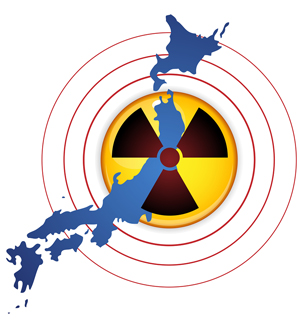 Future cancer deaths due to accumulated radiation exposures in the population living near Fukushima are predicted to be “extremely low to none,”2 “Preliminary dose estimation from the nuclear accident after the 2011 Great East Japan Earthquake and Tsunami.” WHO. 2012. http://apps.who.int/iris/bitstream/10665/44877/1/9789241503662_eng.pdf although workers involved in mitigating the effects of the accident do face minimally higher risks for some cancers. Note: if you follow the link on footnote 2 and read the report, it’s important to understand what you’re reading. For example, the report states, “[F]or all solid cancers, the estimated lifetime risks increase by up to around 4% over baseline rates in females exposed as infants; and for thyroid cancer, the estimated lifetime risk increases by up to around 70% over baseline rates in females exposed as infants.” Now a 70% increase in risk certainly doesn’t seem small, but you have to understand that the increase is a “relative increase over baseline” and not an absolute increase in risk. As the report explains, because the baseline lifetime risk of thyroid cancer for females is just 0.75%, the additional risk due to exposure in the most affected location is 0.5%. And that’s only in the most affected region. Risks in the second most affected location are one-half of that.
Future cancer deaths due to accumulated radiation exposures in the population living near Fukushima are predicted to be “extremely low to none,”2 “Preliminary dose estimation from the nuclear accident after the 2011 Great East Japan Earthquake and Tsunami.” WHO. 2012. http://apps.who.int/iris/bitstream/10665/44877/1/9789241503662_eng.pdf although workers involved in mitigating the effects of the accident do face minimally higher risks for some cancers. Note: if you follow the link on footnote 2 and read the report, it’s important to understand what you’re reading. For example, the report states, “[F]or all solid cancers, the estimated lifetime risks increase by up to around 4% over baseline rates in females exposed as infants; and for thyroid cancer, the estimated lifetime risk increases by up to around 70% over baseline rates in females exposed as infants.” Now a 70% increase in risk certainly doesn’t seem small, but you have to understand that the increase is a “relative increase over baseline” and not an absolute increase in risk. As the report explains, because the baseline lifetime risk of thyroid cancer for females is just 0.75%, the additional risk due to exposure in the most affected location is 0.5%. And that’s only in the most affected region. Risks in the second most affected location are one-half of that.
Now, keep in mind that these are WHO statistics, and many people question the validity of information from WHO. WHO, for example, claims that estimated exposure to radiation in the most affected areas after the disaster ranged from 12-25 mSv, which is about 3-5 times your average yearly exposure to radiation just from being alive on planet Earth—in other words, not a big deal. Greenpeace, on the other hand, believes that people in the primary evacuation zone were exposed to hundreds of mSv…possibly.3 Oda Becker. “Potential internal radiation dose from inhalation in the vicinity of the Fukushima NPP on 14th and 15th March 2011.” Greenpeace Germany. November 2012. (Accessed 15 Sep 2015.) http://www.greenpeace.org/international/Global/international/briefings/nuclear/2013/2012_OdaBecker.pdf
In any case, on September 5th of this year, the Japanese government lifted the evacuation order for the town of Naraha in Fukushima Prefecture, which is within the 20-kilometer primary evacuation zone cited by Greenpeace. The government said that radiation levels at Naraha had fallen to acceptable levels after decontamination work. Japan had previously lifted evacuation orders in two smaller areas, but this is the first time that the order has been rescinded for an entire town where every resident had been told to evacuate.4 “Fukushima: Japan ends evacuation of Naraha as ‘radiation at safe level'” The Guardian. 5 Sep 2015. (Accessed 15 Sep 2015.) http://www.theguardian.com/environment/2015/sep/05/fukushima-japan-ends-evacuation-of-naraha-as-radiation-at-safe-level
The bottom line is that the truth probably lies somewhere between all of this conflicting information. To be sure, WHO has been found guilty on more than one occasion of reframing bad news into a less negative light so as to accommodate the interests of powerful countries that don’t want to suffer the economic consequences that might result from bad news. He who controls the purse strings controls the news. And Greenpeace has likewise been guilty on more than one occasion of reframing negative news into a more dramatic scenario to accomplish their mission of making sure the public pays attention to issues they consider important. In any case, deaths from radiation, long-term, are likely to be more than “extremely low to none,” but nowhere near catastrophic. Then again, no one should make light of the 4,000 deaths that have already resulted from the disaster’s non-radiation causes. Also, to be fair, a coal burning plant would likely have about the same impact on long term mortality rates as a result of compromised air quality and mercury released into the ecosystem. Green, renewable energy, although having higher initial costs, would not have the long-term health consequences associated with either a coal plant or the Fukushima disaster. For perspective, it should be noted that the tsunami itself killed almost 16,000 people with another 3,000 people listed as missing.
Fukushima Will Cost $105 Billion–Plus
In addition to the $300 billion in material damages up and down the Japanese coast from the tsunami itself, the Japanese government estimates that costs for the Fukushima disaster could ultimately run around 5.8 trillion yen ($48 billion), and could take as long as 40 years to completely clean up the affected territories, store the radioactive soil, and scrap the Fukushima Dai-Ichi nuclear plant itself. But that estimate is likely low. A study out of Osaka University that relied on the Tokyo Electric Power Company’s (TEPCO) own figures puts the estimate at almost double that, at 11.08 trillion yen ($92 billion).5 “Fukushima nuclear crisis estimated to cost ¥11 trillion: study.” The Japan Times. Aug 27, 2014. (Accessed 15 Sep 2015.) http://www.japantimes.co.jp/news/2014/08/27/national/fukushima-nuclear-crisis-estimated-to-cost-%C2%A511-trillion-study The major reason for the difference is that the government estimates did not include an estimated $41 billion in compensation to residents in the affected area.
And these are just the hard costs. Billions more have been lost by Japanese industries affected by the disaster—particularly food related industries. How many of you are comfortable buying food products from Japan right now—even if they were grown in areas far from Fukushima and are guaranteed radiation free? It’s absolutely not fair to Japanese farmers, but it’s a reality. And what about the Japanese fishing industry—normally worth $16.5 billion dollars to the Japanese economy?
The Oceans around Fukushima
The reports of radiation spewed from the reactors into the ocean are certainly all over the map. Immediately after containment breach, the reports were apocalyptic. Yet, only a few months later, in June 2011, they were far more sanguine. According to reports, the ocean currents had quickly moved any contamination away from shore, mixing and diluting it in the deeper ocean waters. As Ken Buesseler (the head of the multi-institutional research team examining the aftereffects of Fukushima on the Pacific Ocean) and his team reported, “Even when we sampled within sight of the nuclear power plants, levels of cesium-137 and cesium-134 in the ocean, two primary products of nuclear fission, were elevated, but still below those considered of concern for exposure to humans. They were also well below biological thresholds of concern to the small fish and plankton we sampled, even if these were consumed by humans.” They did caution that other measurements showed trends that were more worrisome, such as the fact that levels of radioactivity found in fish were not decreasing and that there appeared to be hot spots on the seafloor that were not well mapped. Nevertheless, the overall tone of the report was positive.6 “Fukushima Radiation in the Pacific – Research Cruise, June 3 – 17, 2011.” Woods Hole Oceanographic Institution. (Accessed 16 Apr 2015.) http://www.whoi.edu/page.do?pid=67796
Then in April 2012, the tone of the team’s reports changed as they announced that they had found “elevated levels” of radiation in the marine environment around Fukushima. Then, just six months later, they announced that about 40 percent of the fish caught near the nuclear plant were found to be contaminated with radioactive cesium at levels above government safety limits. Buesseler warned at the time that Fukushima fish “may be inedible for a decade.”7 Ken O. Buesseler. “Fishing for Answers off Fukushima.” Science 26 October 2012: 480-482. http://www.sciencemag.org/content/338/6106/480.summary?sid=ed884a4d-2922-41a4-bf53-9d2d1ad7ef55 As he explained, cesium is a salt and if you shut off the source of the radiation, its presence in the ocean should go down a few percent a day—being almost entirely gone within 90 days. The fact that hasn’t happened so long after the original disaster means that radiation is either still leaking from the damaged reactors into the ocean or the massive amount water they’ve been using to continually cool the damaged reactors, which then is subsequently contaminated, is leaking into the ocean—or being dumped. This was denied by TEPCO, but that denial became spurious when in 2013, Prime Minister Shinzo Abe called leakage “an urgent issue” and ordered the government to step in and help in the clean-up after TEPCO finally admitted that water was indeed seeping past an underground barrier it had attempted to create in the soil.8 Patrick J. Kiger. “Fukushima’s Radioactive Water Leak: What You Should Know.” National Geographic. 9 Aug 2013. (Accessed 16 Sep 2015.) http://news.nationalgeographic.com/news/energy/2013/08/130807-fukushima-radioactive-water-leak/
In 2013, things looked even worse when it was reported in Le Monde that two years after the disaster a fish had been caught that contained more than 2,500 times the legal limit for radiation in seafood.9 “Radioactivité record sur un poisson pêché près de Fukushima.” Le Monde. 18 Jan 2013. (Accessed 16 Sep 2015.) http://www.lemonde.fr/planete/article/2013/01/18/radioactivite-record-sur-un-poisson-peche-pres-de-fukushima_1819315_3244.html
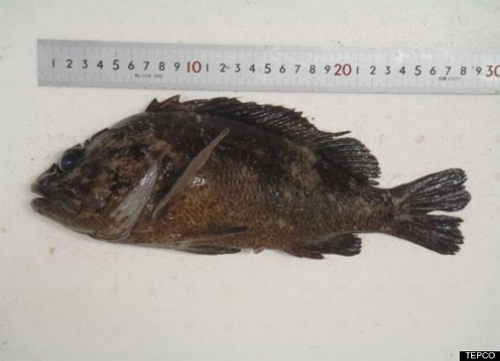
In March of 2015, however, a biosphere impact study reversed field again, claiming that the previous assessments had overestimated the exposures in the immediate aftermath of the accident, whereas corrected modeling methods now showed that marine populations in the vicinity of Fukushima did not seem to be at significant risk.10 J. Vives i Batlle. “Exposures and effects in the marine environment after the Fukushima accident.” Ann ICRP. 2015 Jun;44(1 Suppl):331-46. http://ani.sagepub.com/content/44/1_suppl/331.full.pdf+html
It should be noted that every morning, hundreds of pounds of fresh fish are still express-mailed to the Onjuku lab by prefectural governments and fishing cooperatives across eastern Japan. Every single one of those specimens is photographed and tagged with details about where and when it was caught; processed, packed into plastic vessels, and tested for the presence of radioactive isotopes. The US considers any reading below 1,200 becquerels per kilogram safe for human consumption, but under especially conservative radiation safety limits enacted in the wake of the Fukushima accident in March 2011, a reading of just 1/12 that level triggers an automatic ban on fish sales in Japan.
The bottom line is that the number of people who are today willing to buy fish from Fukushima is very low. They are afraid. And there is something else of which people are afraid. What about fish that migrate? Tuna, for example, constantly travel the oceans from breeding grounds in Japan to feeding grounds off the US. What are the possibilities of a fish hanging out near Fukushima, picking up a large dose of radiation, then heading back to the US where it’s caught and ends up on your plate? And the answer is: not likely.
Researchers from Stanford and Stony Brook Universities checked out that very scenario. In fact, they found that the concentration of radioactive cesium in Bluefin tuna caught off California in 2011 was ten times higher than in fish caught before the accident, and that cesium had been picked up from Fukushima.11 Daniel J. Madigan, Zofia Baumann, and Nicholas S. Fisher. “Pacific bluefin tuna transport Fukushima-derived radionuclides from Japan to California.” PNAS 2012 109 (24) 9483-9486; published ahead of print May 29, 2012. http://www.pnas.org/content/109/24/9483.full Sounds bad until you realize that this level of radiation is still more than ten times lower than the safety limit in Japan and about thirty times lower than the concentration of radionuclides naturally found in tuna. Similarly, a 2013 study found that the dose of radiation you would experience from eating tuna containing Fukushima-derived radionuclides was 1,000 to 10,000 times lower than the dose you would receive from the naturally occurring radionuclides present in the same fish.12 Nicholas S. Fisher, Karine Beaugelin-Seiller, et al. “Evaluation of radiation doses and associated risk from the Fukushima nuclear accident to marine biota and human consumers of seafood.” PNAS 2013 110 (26) 10670-10675; published ahead of print June 3, 2013. http://www.pnas.org/content/110/26/10670.full Bottom line: at the moment, at least, this is not a concern. Mercury levels in that same tuna are a much more immediate concern.
Radiation Reaches the US
In April of this year, headlines proclaimed: “Fukushima radiation has reached the North American Shore.” The articles then went on to blame reports of algae blooms, whale strandings, cancer in seals, the collapse of fish stocks, and more on this radiation. Not surprisingly, as with so many of these headlines, it was based on a kernel of truth, then highly sensationalized for dramatic effect. Yes, as explained by Peter Neill, Director of the World Ocean Observatory, a plume of ocean water containing cesium-134 had indeed reached the North American shores, but the level of cesium detected in that plume is less than 2 becquerels per cubic meter.13 Peter Neil. “Radiation in the Ocean.” The Blog. 1 Sep 2015. (Accessed 16 Sep 2015.) http://www.huffingtonpost.com/peter-neill/radiation-in-the-ocean_b_8072914.html (You can track the plume’s movement and the actual levels of contamanation on the Center for Marine and Environmental Radioactivity website.14 http://ourradioactiveocean.org/results.html ) That is more than 1,000 times lower than the acceptable limit for drinking water set by the EPA. And even using worst case scenarios, the highest levels that we would possibly see any time in the future are still only 20 to 30 becquerels per cubic meter – again, well below levels thought to be safe for human consumption.
Which brings us to the movie Jaws 2. The tagline for that film was: “Just when you thought it was safe to go back in the water.” On August 25th, it was announced that TEPCO was going to release 150-300 tons of contaminated water a day into the Pacific Ocean.15 “TEPCO gets approval to release more Fukushima water into the Pacific.” Enformable Nuclear News. 25 Aug 2015. (16 Sep 2015.) http://enformable.com/2015/08/tepco-gets-approval-to-release-more-fukushima-water-into-the-pacific/ This is the amount of groundwater that passes underneath the nuclear facility every day and is being continually contaminated as it moves through the site and the crippled reactor buildings. At this point, I think it’s safe to say that Fukushima Dai-Ichi is the proverbial gift that keeps on giving.
Conclusion
Four years ago, in my newsletter on Fukushima, I stated: “[Fukushima] is indeed a great tragedy for the Japanese people, but it is still primarily a local event for Japan, with only the smallest of chances that there will be any substantial health impact on the rest of the world.” In truth, despite all the new headlines and reports of imminent disaster, that assessment pretty much holds true today. Yes, there are a handful of studies that say otherwise, but so far, the vast amount of data has not supported them. So far, the data supports more conservative projections. That said, I would not necessarily take any pronouncements from governments or government agencies as to the true extent of the problem, or how safe things are, at face value. I would definitely take them with a grain of salt—radioactive cesium salt, actually. On the other hand, anything that comes out of Woods Hole Oceanographic16 http://www.whoi.edu/ is likely to be a whole lot more reliable.
The bottom line, though, is that until something changes:
- Fukushima is an ecological catastrophe that will take decades and several hundred billion dollars to clean up.
- It is primarily a Japanese catastrophe, not a world catastrophe.
- It is a canary in a coal mine that merely hints at the true costs associated with nuclear energy—at least using current technologies. Remember, even without a meltdown, no one has figured out how to safely store the waste from nuclear plants for the several hundred thousand years required. To give you some perspective, the earliest fragments of recorded history only go back about 5,500 years ago. Theoretically, we need to safely store the radioactive waste from nuclear reactors for about 40 times that long. The odds of that happening are slim.
- Despite everything, Japan has decided to renew its commitment to nuclear power. In August, the Kyushu Electric Power Co. restarted the No. 1 reactor at the Satsuma-Sendai power plant. They just announced that they plan to restart the No. 2 reactor at the same plant on Oct. 15th. The two reactors were out of service for more than four years since all 43 of Japan’s nuclear power plants were ordered to shut down following the 2011 Fukushima disaster. Potentially, most of those plants will come back online over time. It should be noted that according to Kyushu Electric Power, there are 14 known active volcanoes within 100 miles of the Sendai reactor. They assure us that all of these volcanoes are far enough away from the power plant so as to present no danger. Then again, the Fukushima Dai-Ichi plant was supposed to be tsunami safe as well.
When all is said and done, it looks like the world dodged the proverbial bullet at Fukushima. There is no guarantee we’ll be so lucky the next time. We really need to get serious about safe, ecologically friendly, renewable energy ASAP, before the next disaster (and there will be one) proves more global in impact.
In the meantime, if you’re worried about radioactivity from Fukushima, as I’ve explained before:
- You can always keep some prophylactic iodine on hand–just in case.
- Use a good colon detox formula that contains substantial amounts of apple pectin and montmorillonite clay. As I’ve said for years, apple pectin actually draws radioactive waste from your body and passes it out through your colon. It’s one of the reasons I include it in my Colon Detox formula — to remove contamination from everyday exposure to radiation.
- Use a supplement such as a good antioxidant formula or blood cleansing formula that contains chaparral extract. The primary biochemical in chaparral, NDGA (nordihydroguaiaretic acid), has been shown to protect the body against genetic damage caused by exposure to radioactivity.
- Keep in mind that plutonium, cesium, and strontium are all heavy metals and so, to some degree, can be chelated from the body. Look for a heavy metal detox formula that contains both chlorella and cilantro.
- And finally, you should have a written disaster preparedness plan for you and your family. And I’m not talking about just plans for a nuclear disaster. I’m talking about plans for what happens during and after earthquakes, floods, tornados, monsoons, major flu epidemics, plague, or a terrorist event in your hometown — basically, whatever is possible in your neck of the woods.
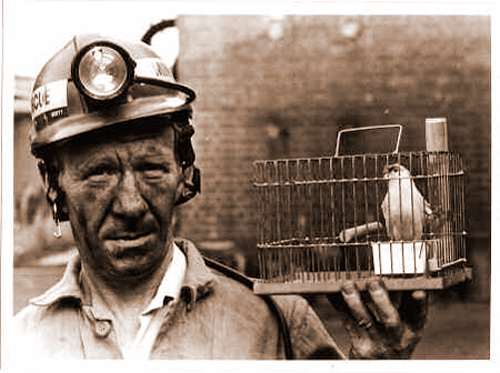
References
| ↑1 | Opinion. “Fukushima’s appalling death toll.” Japan Times. March 1, 2014. (Accessed 15 Sep 2015.) http://www.japantimes.co.jp/opinion/2014/03/01/editorials/fukushimas-appalling-death-toll |
|---|---|
| ↑2 | “Preliminary dose estimation from the nuclear accident after the 2011 Great East Japan Earthquake and Tsunami.” WHO. 2012. http://apps.who.int/iris/bitstream/10665/44877/1/9789241503662_eng.pdf |
| ↑3 | Oda Becker. “Potential internal radiation dose from inhalation in the vicinity of the Fukushima NPP on 14th and 15th March 2011.” Greenpeace Germany. November 2012. (Accessed 15 Sep 2015.) http://www.greenpeace.org/international/Global/international/briefings/nuclear/2013/2012_OdaBecker.pdf |
| ↑4 | “Fukushima: Japan ends evacuation of Naraha as ‘radiation at safe level'” The Guardian. 5 Sep 2015. (Accessed 15 Sep 2015.) http://www.theguardian.com/environment/2015/sep/05/fukushima-japan-ends-evacuation-of-naraha-as-radiation-at-safe-level |
| ↑5 | “Fukushima nuclear crisis estimated to cost ¥11 trillion: study.” The Japan Times. Aug 27, 2014. (Accessed 15 Sep 2015.) http://www.japantimes.co.jp/news/2014/08/27/national/fukushima-nuclear-crisis-estimated-to-cost-%C2%A511-trillion-study |
| ↑6 | “Fukushima Radiation in the Pacific – Research Cruise, June 3 – 17, 2011.” Woods Hole Oceanographic Institution. (Accessed 16 Apr 2015.) http://www.whoi.edu/page.do?pid=67796 |
| ↑7 | Ken O. Buesseler. “Fishing for Answers off Fukushima.” Science 26 October 2012: 480-482. http://www.sciencemag.org/content/338/6106/480.summary?sid=ed884a4d-2922-41a4-bf53-9d2d1ad7ef55 |
| ↑8 | Patrick J. Kiger. “Fukushima’s Radioactive Water Leak: What You Should Know.” National Geographic. 9 Aug 2013. (Accessed 16 Sep 2015.) http://news.nationalgeographic.com/news/energy/2013/08/130807-fukushima-radioactive-water-leak/ |
| ↑9 | “Radioactivité record sur un poisson pêché près de Fukushima.” Le Monde. 18 Jan 2013. (Accessed 16 Sep 2015.) http://www.lemonde.fr/planete/article/2013/01/18/radioactivite-record-sur-un-poisson-peche-pres-de-fukushima_1819315_3244.html |
| ↑10 | J. Vives i Batlle. “Exposures and effects in the marine environment after the Fukushima accident.” Ann ICRP. 2015 Jun;44(1 Suppl):331-46. http://ani.sagepub.com/content/44/1_suppl/331.full.pdf+html |
| ↑11 | Daniel J. Madigan, Zofia Baumann, and Nicholas S. Fisher. “Pacific bluefin tuna transport Fukushima-derived radionuclides from Japan to California.” PNAS 2012 109 (24) 9483-9486; published ahead of print May 29, 2012. http://www.pnas.org/content/109/24/9483.full |
| ↑12 | Nicholas S. Fisher, Karine Beaugelin-Seiller, et al. “Evaluation of radiation doses and associated risk from the Fukushima nuclear accident to marine biota and human consumers of seafood.” PNAS 2013 110 (26) 10670-10675; published ahead of print June 3, 2013. http://www.pnas.org/content/110/26/10670.full |
| ↑13 | Peter Neil. “Radiation in the Ocean.” The Blog. 1 Sep 2015. (Accessed 16 Sep 2015.) http://www.huffingtonpost.com/peter-neill/radiation-in-the-ocean_b_8072914.html |
| ↑14 | http://ourradioactiveocean.org/results.html |
| ↑15 | “TEPCO gets approval to release more Fukushima water into the Pacific.” Enformable Nuclear News. 25 Aug 2015. (16 Sep 2015.) http://enformable.com/2015/08/tepco-gets-approval-to-release-more-fukushima-water-into-the-pacific/ |
| ↑16 | http://www.whoi.edu/ |





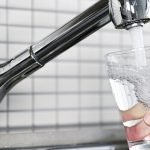


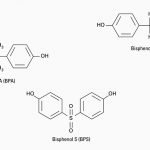



Jon,
Jon,
Thanks for a reasonable perspective on this disaster.
Hopefully, Japan will not suffer such a serious event in the near future.
Tepco and the Japanese
Tepco and the Japanese government and consumers should take the karma concept seriously.
It’s also important to note
It’s also important to note that Fukushima is a BIG prefecture, and that the effected area around the plant is not that wide It seems that if you so happen to have “Fukushima” as part of your address everyone thinks you are a walking bag of radiation…
this confused me: “
this confused me: ”
he concentration of radioactive cesium in Bluefin tuna caught off California in 2011 was ten times higher than in fish caught before the accident, and that cesium had been picked up from Fukushima.11 Sounds bad until you realize that this level of radiation is still more than ten times lower than the safety limit in Japan and about thirty times lower than the concentration of radionuclides naturally found in tuna. Similarly, a 2013 study found that the dose of radiation you would experience from eating tuna containing Fukushima-derived radionuclides was 1,000 to 10,000 times lower than the dose you would receive from the naturally occurring radionuclides present in the same fish.12 Bottom line: at the moment, at least, this is not a concern. Mercury levels in that same tuna are a much more immediate concern.
”
In simple terms, yes, there
In simple terms, yes, there is radioactivity specifically from Fukushima present in fish found off the coast of California, but it is still at very, very, very, low levels–far lower than naturally occurring levels of radiation that are always found in fish, totally independent of Fukushima.
Thank you so much for your
Thank you so much for your rational perspective, and informative article. Fear based headlines are simply not helpful to anyone… unless of course there’s an agenda or motivation for such headlines. You stand high above the money train, so thank you for that, for caring above profiting.
You are minimizing the
You are minimizing the effects of this disaster after 4 yrs. How can you say after 4 yrs of pouring tons or radioactive water into the pacific ocean daily and continues to do so, that this is minimal damage? You are just like the main stream media…way off base.
Jon can say what he says
Jon can say what he says because he is reporting on the science, not the emotion.
It’s interesting that similar comments to yours were expressed when Jon reported on the Ebola outbreak. (Check out the comments.) Whereas Jon said that the science indicated that the outbreak was likely to remain a West African problem and not a world problem, a number of people wrote in to say that Jon was way off base and that Ebola absolutely could be transmitted through the air and that a major outbreak was coming to the US. They “knew” this because several alternative health sites had told them it was so. Well, how did that work out? In fact, those same alternative health sites that ramped up the fear, despite the science, made a fortune selling unnecessary Ebola protection kits. But other than a couple of isolated cases that appeared outside of West Africa, the outbreak never actually spread outside of West Africa—exactly as Jon predicted. It’s also probably worth noting that not one of the people who wrote in to complain about Jon’s predictions ever wrote back to acknowledge that they had been wrong and that Jon’s predictions turned out to be dead on accurate. And in fact, the exact same scenarios played out with swine flu and bird flu.
And speaking of bird flu, it was back in 2006 while telling us that bird flu was unlikely to be a major problem (unlike many other sites that claimed otherwise), Jon was among the first to write about how big a problem MRSA was going to be. Keep in mind that MRSA was virtually unknown at that time. Last year, there were approximately 75,000 cases of MRSA in the US alone.
The bottom line is that unlike many sites, when Jon tells you it’s time to worry, you really have something to be worried about.
Are you mad? We DID NOT
Are you mad? We DID NOT dodge any danger! A endless stream of radioactive water pouring into the Pacific Ocean & the atmosphere, intentional dumping of radioactive waste, by Tepco & the gov. of JAPAN, , huge stockpiles of radioactive wastes in plastic bags & barrels siting along the coast & water ways (witch were just flooded & lost….) compromised containment buildings with countless spent full rods stored in a potentially deadly Manor, NO plans by Japan to control or protect the world from the most DEADLY NUCLEAR ASSULT ON LIFE, we have ever witnessed… This NUCLEAR ASSULT continues every day & it’s only Geting more dangerous… The silence from JAPAN & our own goverment is defining…… We seen no public info on radiation counts for the west coast, no health reports or advice, no truth from our news sources… We are all in a battle for our life from this 3X MELT DOWN & no one should discount the danger we will be in until this radioactive assult is stoped. It will take hundreds of years to see some end to this… Most of us will be effected on some level. It would be to our advantage to know exactly what we are in for & how we can protect what life we have. The TTP will create even more danger from products & foods originating in japan … No thanks! This is a world wide problem & we need a world wide solution… We are deep in the woods with no light in sight…. Speek up people! Life is short.
I like this great one blog
I like this great one blog post.
Good to have this article.